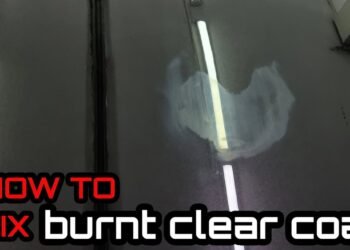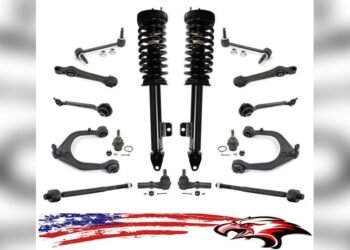Have you ever wondered if rain can wash away the wax you carefully applied to your car? You spend time and effort waxing your vehicle to protect its paint and keep it shining, but then those unexpected showers roll in.
Does all that hard work just wash down the drain with the rainwater? Understanding how rain affects car wax is essential if you want to keep your car looking its best without wasting time on unnecessary reapplications. You’ll discover the truth about rain and car wax, how long your wax really lasts, and what you can do to protect your car’s finish no matter the weather.
Keep reading to find out how to maintain that showroom shine rain or shine!

Credit: ridincleandetailing.com
Rain’s Impact On Car Wax
Rain affects car wax in several ways. It does not instantly wash away the wax but can influence its protective abilities. Understanding how rain interacts with wax helps car owners maintain their vehicle’s shine and protection.
How Wax Protects Paint
Car wax creates a thin layer on the paint surface. This layer acts as a shield against dirt, UV rays, and minor scratches. Wax also helps water bead up and roll off, reducing water spots. The smooth surface prevents contaminants from sticking easily.
Effect Of Rainwater On Wax
Rainwater alone does not remove wax quickly. Quality wax repels water, causing it to form droplets. These droplets slide off the car, carrying away dirt. Light rain may clean the surface but does not strip the wax. Heavy or acidic rain can weaken the wax over time.
Long-term Exposure And Wax Durability
Repeated wet and dry cycles wear down wax protection. Pollution in rainwater can break down wax molecules. Over weeks, the wax layer thins and loses effectiveness. Regular waxing restores protection and keeps the paint safe. Proper maintenance extends wax durability despite rain exposure.

Credit: ridincleandetailing.com
Waxing In Wet Conditions
Waxing a car in wet conditions presents unique challenges. Moisture on the surface affects how wax bonds to the paint. The application process demands a dry, clean surface for best results. Understanding the impact of rain helps protect your car’s finish and maximize wax performance.
Why Rain Interferes With Wax Application
Rain leaves water droplets on the car’s surface. These droplets block wax from sticking properly. Wax needs a dry base to form a smooth, protective layer. Moisture causes uneven coverage and weakens the bond. This reduces the wax’s ability to protect the paint effectively.
Risks Of Waxing During Rain
- Uneven application due to water barriers on the paint.
- Reduced durability since moisture breaks down the wax layer faster.
- Streaks and water spots that spoil the glossy finish.
- Possible paint damage from poor wax adhesion.
Water-activated Spray Waxes
Some waxes work differently in wet conditions. Water-activated spray waxes can be applied on a wet surface. They use water to spread and activate the protective sealant. These products are not the same as traditional waxes. They provide temporary protection and require a special application method.
Maintaining Wax Protection
Maintaining wax protection on your car is essential to keep its shine and shield the paint. Rain alone does not instantly wash away the wax. Quality wax repels water and forms a protective layer on the surface. Over time, exposure to rain, dirt, and pollution wears down this layer. Regular care helps keep the wax effective and preserves your car’s appearance.
Best Weather For Waxing
Choose a dry day with mild temperatures for waxing. Avoid direct sunlight to prevent the wax from drying too fast. A cool, overcast day is ideal. This helps the wax bond well to the car’s surface. Avoid waxing on rainy or very humid days. Moisture stops the wax from sticking properly.
Indoor Waxing Tips
Wax your car indoors to avoid weather issues. A garage or covered area offers shelter from rain and dust. Make sure the space is well-lit and clean. Use soft cloths and apply wax in small sections. This method ensures even coverage and better protection. Indoor waxing extends the life of the wax.
Using Rain Repellent Products
Rain repellent products improve water beading on glass and paint. They do not replace car wax but add extra protection. Apply rain repellent to windows and mirrors for clearer vision in wet weather. Some products can be used alongside wax for enhanced durability. Follow product instructions for best results and safer driving.
Removing Car Wax
Removing car wax is a necessary step when the protective layer becomes old or uneven. Wax can lose its shine and effectiveness over time. Dirt, pollution, and weather conditions can wear it down. Proper removal helps prepare the car for a fresh coat of wax. It also keeps the paint in good condition.
Chemical Methods For Wax Removal
Chemical products made for wax removal work by softening old wax. These products dissolve the wax, making it easy to wipe off. Use a wax remover or a dedicated cleaner. Apply it with a soft cloth and rub gently. Avoid harsh chemicals that can damage the paint. Follow product instructions carefully for best results.
Mechanical Removal Techniques
Mechanical methods involve scrubbing or buffing the wax off the car. Use a microfiber cloth or a foam applicator pad. A dual-action polisher can remove wax faster and evenly. Be gentle to prevent scratches on the paint. Use circular motions and moderate pressure. This method works well for thick or stubborn wax layers.
Special Care For Plastic Trim
Plastic trim parts need careful treatment during wax removal. Wax can build up and look dull on plastic areas. Avoid strong chemicals on plastic, as they can cause discoloration. Use a mild cleaner or a plastic-safe wax remover. Clean with a soft cloth to keep the trim looking new. Protect plastic parts with a dedicated trim restorer after cleaning.
Waxing Frequency And Care
Waxing your car regularly keeps its paint safe and shiny. Understanding how often to wax and how to care for the wax layer matters. Proper waxing frequency helps maintain the protective barrier against rain, dirt, and sun damage. This section explains when to wax, how to know if wax needs reapplication, and ways to protect your car through different seasons.
How Often To Wax Your Car
Generally, wax your car every three months. This timing keeps the wax layer strong and effective. Some waxes last longer, up to six months, but check the product details. Driving in harsh weather or city pollution may require more frequent waxing. Regular waxing stops the paint from fading and protects it from rain and dirt.
Signs Wax Needs Reapplication
Look for water spots that do not bead up on the car’s surface. This shows the wax has worn off. Dull or faded paint also means the wax layer is weak. If dirt sticks to the paint easily, it is time to reapply wax. These signs help you know when to wax again, protecting the paint properly.
Protecting Your Paint Through Seasons
Different seasons affect your car’s wax differently. Winter salt and rain can wear wax faster. Summer sun can dry out the wax layer. Clean your car often to remove harmful dirt and pollutants. Wax before heavy rain or snow to add an extra shield. Seasonal waxing keeps your car looking fresh year-round.

Credit: www.reddit.com
Frequently Asked Questions
Does Rain Wash Off Car Wax?
Rain does not immediately wash off quality car wax. Wax beads water and protects paint. Over time, rain, dirt, and wear reduce wax effectiveness. Regular maintenance and reapplication keep your car protected and shiny.
Can I Wax My Car On A Rainy Day?
Do not wax your car on a rainy day. Moisture prevents proper wax adhesion, causing streaks and uneven coverage. Wax sticks best on a clean, dry surface. For wet conditions, use water-activated spray waxes designed specifically for damp application.
What Removes Wax From A Car?
Strong degreasers like dish soap, specialized car wash soaps, or clay bars effectively remove wax from a car’s surface.
What Do Car Detailers Do When It Rains?
Car detailers avoid waxing or polishing during rain to prevent poor adhesion and streaks. They wait for dry conditions or use water-activated products. Detailing usually occurs indoors or on dry days to ensure quality and durability of protection.
Does Rain Wash Off Car Wax Immediately?
Rainwater alone does not instantly wash off car wax. Quality wax repels water and stays effective.
Conclusion
Rain does not quickly wash away car wax. Good wax beads water, keeping paint safe. Over time, rain and dirt wear wax down. Regular waxing keeps protection strong and shiny. Avoid waxing on rainy days for best results. Use water-activated spray wax if needed in wet weather.
Keep your car clean and dry before waxing. This helps wax stick well and last longer. Protect your paint by maintaining wax often. Simple care helps your car look its best.

















